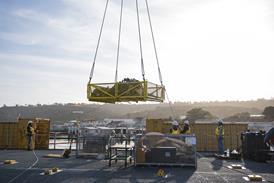Speculation has abounded in recent years about what type of aircraft Brazilian manufacturer Embraer might develop next.
The company’s executives have fuelled such discussion by expressing interest in several potential projects, including a new turboprop, a larger business jet and even possibly a narrowbody passenger aircraft to compete against Airbus and Boeing.
But it seems Embraer remains some distance from actually deciding which path to take, with top leaders stressing this week that they want to better understand technology advancements before committing to a development track. Embraer must also still work out the tricky question of how to pay for such a project – the answer seemingly being collaborations with deep-pocketed partners.
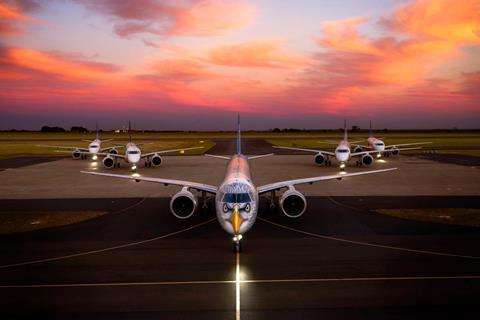
“At this point of time, we don’t have a… complete plan to go this way or that way… At this point of time, we don’t have any decision of what to build,” Embraer chief executive Francisco Gomes Neto said on 18 November during the Sao Jose dos Campos-based company’s investor day in New York City.
Embraer is widely considered to have among the industry’s best aerospace engineering and certification teams, having brought some 20 aircraft through development and certification in the last 20 years – largely on time.
But with the company’s entire product line up already in service (with the exception of the E175-E2, which is stalled due to US airline pilot-contract provisions), and no formal aircraft development programmes underway, the question becomes: What’s next for Embraer’s technical team?
Several years ago the company rolled out its “Energia” family of conceptual low-emission aircraft – 19-50-seaters powered by hydrogen and hybrid-electric systems. But Embraer senior vice-president of engineering and technology development Luis Carlos Affonso made clear on 18 November that those concepts are far from sellable aircraft. They “are not products”, he says. “They are are platforms we use to develop technologies… as a guideline to think about how we would design”.
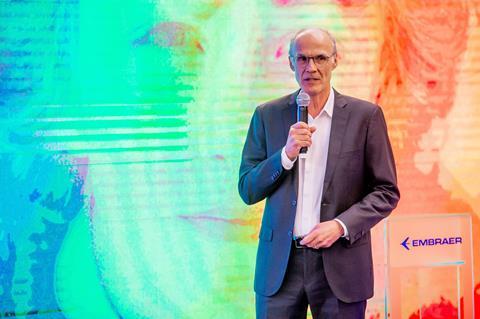
TECHNOLOGY TRACKS
Affonso, largely credited as the driving force behind Embraer’s several-decade stretch of successful product development, insists his team is working hard on several technology efforts – specifically, zero-emission technologies, autonomous flight, AI and data science, airframe technology, passenger experience and Industry 4.0 (jargon meaning digital-backed manufacturing techniques).
“We are putting even more money this year in those technologies – the six innovation verticals – to enable Embraer to do a product in the future,” says CEO Gomes Neto. “We are really investing in new technologies to keep our readiness for a new product.”
What type of aircraft those technologies will actually enable remains a mystery. Pressed on that question this week, executives flatly say they do not know.
CEO Gomes Neto says Embraer Commercial Aviation CEO Arjan Meijer and Embraer Executive Jets CEO Michael Amalfitano, are “fighting for resources” to develop products for their segments, adding that Amalfitano “wants to build a bigger plane”.
Indeed, Amalfitano said in 2023 that Embraer was looking “upstream at what’s next, above the Praetor 600 super-midsize aircraft”, adding, “Clearly, that’s an opportunity that’s intriguing”.
The company has had enormous success breaking into the business jet market, first with its Phenom light jets and more recently with its mid-cabin models, the largest being the 12-passenger, 4,018nm (7,441km)-range Praetor 600.
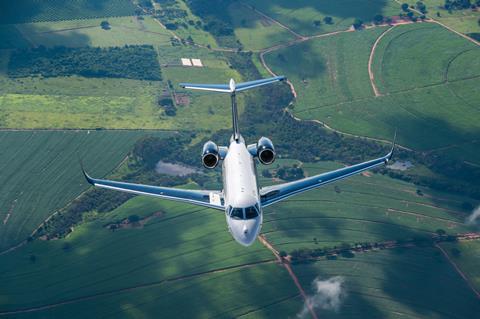
But Embraer has missed out on surging demand in recent years for aircraft the next size up: large-cabin jets like those made by Bombardier, Dassault Aviation and Gulfstream. Amalfitano said stepping up with a larger aircraft would help Embraer capture that opportunity while retaining customers looking to upgrade from Phenoms and Praetors.
Amalfitano addressed the future-aircraft question on 18 November only by explaining how Embraer will go about evaluating the best opportunity. He says the company has historically succeeded with aircraft that stand apart from competitors, either by filling an unoccupied niche or by introducing unique technologies.
That strategy will drive Embraer’s next major aircraft-development programme, whatever that is, he says. The team is therefore “deep-diving into these verticals of innovation” and seeking to understand which advancements will most interest buyers.
“We’re talking to the customers, to make sure, if Luis’s team unlocks the potential of the innovation, will the customers pay for it?” Amalfitano adds. “When we figure that out… then you’ll see a decision.”
NEW NARROWBODY
The future is no more obvious for Embraer’s commercial aircraft business, which helped create the regional passenger jet decades ago with its ERJ and more recently revolutionised the segment again with its still-widelu popular E175.
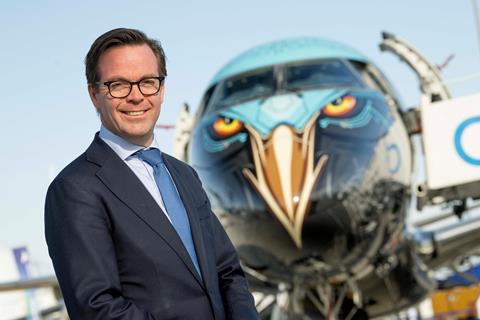
Meijer, the head of that division, sees “clear demand out there in the market for new aircraft”, but adds, “We need to make up our mind what we want to do. We are going to take some time do to that.”
For about a decade, Embraer had talked about possibly developing a new 70-90-seat passenger turboprop aircraft – a somewhat sensible project considering ATR remains the last Western company still producing such types – and seemed close to a product launch in 2020 when it released renderings of a turboprop concept.
But progress then stalled because engine makers could not meet Embraer’s specifications, the company said. Engine suppliers for decades had been updated existing turboprop designs but had failed to launch new-technology clean-sheet replacements.
As of 18 November, the project remains dead in the water. “The product that we were looking at is definitely… in the deep freezer now,” Meijer says. “The engine was not available… I don’t think we are going to change that any time soon.”
With the turboprop idea off the table, reports circulated this year that Embraer is exploring developing an aircraft larger than E-Jets – a narrowbody to compete against jets made by Airbus and Boeing.
Embraer executives have since downplayed such a move, with CEO Gomes Neto saying in June that Embraer has the ability to go bigger but is in no hurry to do so.
Still, the idea makes some sense considering Embraer’s historic developmental successes and doubtless interest from airlines in a third supplier.
“The market is eager for it,” says aerospace analyst Richard Aboulafia with AeroDynamic Advisory. He calls Embraer “such a natural [choice] to do a third-player jet”, adding, “They are so good at what they do.”
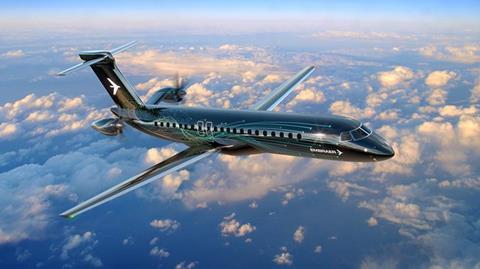
While a clean-sheet Embraer narrowbody would undoubtedly upend the Airbus-Boeing duopoly, the risk is immense.
“This is a job that broke a $10 billion company,” says Aboulafia, referencing Bombardier and its development of the CSeries narrowbody jet. That programme’s cost, compounded by intense competitive pressure from Airbus and Boeing, nearly sunk Bombardier, which once generated about $10 billion in revenue from its aerospace work. To stay afloat, Bombardier was forced to divest the CSeries programme to Airbus; Bombardier then sold off its remaining commercial aerospace business and its rail division.
Embraer is a much smaller company to start with, reporting $5.3 billion of revenue in 2023.
For that reason, Embraer has sought partners to assist – financially and otherwise – with developing a new aircraft. In 2018, it signed a deal to sell its commercial aircraft business to Boeing, but the US company backed out in 2020 amid the Covid-19 pandemic and 737 Max grounding. Since then, Embraer has searched for other suitable partners, talking up possibilities in Asia (including India), Europe and the Middle East.
Aboulafia can envision Embraer finding willing partners in such regions but does not see slam dunks. He cannot envision Embraer landing major partnerships with Chinese entities and notes that Indian partners might not bring sufficient financial assistance. While partners in Saudia Arabia might seem logical, setting up production there could be impractical due to an insufficient local aerospace workforce.
Linking up with a major US aerospace company, however, would be a different story. “RTX or GE would be a giant first step,” says Aboulafia.





